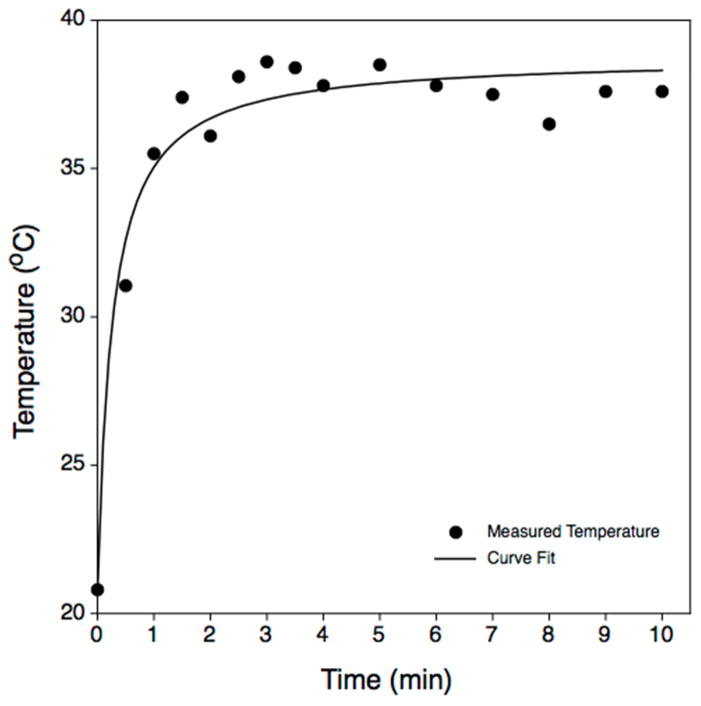Figure 3.
Representative temperature rise of a 100 μL aliquot of water exposed to pulsed, 1.95 MHz ultrasound applied using (free-field) acoustic pressure amplitudes of 16.0 MPa peak positive and −9.9 MPa peak negative. The pulse parameters (50 cycle pulses, 450 Hz PRF) differed somewhat from those used in biological experiments (10 cycle pulses, 2 kHz PRF), but the duty factor was the same (0.01). Measurements were conducted with a thermocouple; measurements were acquired during intervals in which the ultrasound was switched off momentarily (2–3 s). Measurements of this kind were made several times with closely similar results; the maximum temperature we observed never exceeded 39°C. Significant E. coli cell inactivation is not expected at these temperatures.

